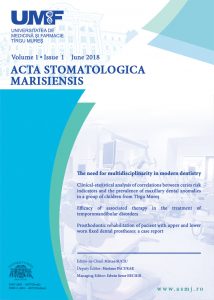Introduction: Tooth prognosis evaluation involves continual assessments to guide patient-centered treatment plans. This means that the tooth prognosis may dictate whether a tooth is restored, extracted, or maintained.
Aim of study: The aim of this work was to evaluate current trends in tooth prognosis evaluation based on radiographic bone loss amongst dental practitioners.
Material and Methods: A survey including demographic questions and ten radiographs (vertical bitewings or peri-apical) showing bone loss around teeth and implants were distributed to dental practitioners. Practitioners were asked to determine the prognosis of the tooth or implant and suggest a percentage describing the likelihood of the tooth or implant surviving for ten years.
Results: One of the ten radiographs provided for assessment was given good to fair prognosis by 100% of the participants. Only three out of the ten radiographs presented had strong suggestions for tooth retention. Recommendation for extraction by dental practitioners varied from 1-66% across the radiographs. Furthermore, practitioners predicted a 0% chance of ten-year survival for many of the teeth.
Conclusions: Assessing prognosis based on radiographs only, is insufficient and clinical data provides invaluable information to establishing tooth prognosis. Dental professionals should understand that compromised teeth can outlive dental implants and our role as dental professionals is to prevent and treat oral diseases to preserve the dentition as long as possible.
Danielle Clark-Perry 1, Jaimie Baybrook 1, Raisa Catunda 1, Liran Levin 1
1 University of Alberta, Canada.
1 University of Alberta, Canada.

Comments are closed.